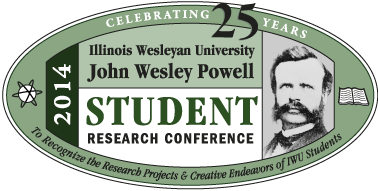Ostriches, House Sparrows, and Chickens...Oh My! Utilizating Corrosion Casts to Visualize Eggshell Pore Morphology
Submission Type
Event
Expected Graduation Date
2014
Location
Center for Natural Sciences, Illinois Wesleyan University
Start Date
4-12-2014 9:00 AM
End Date
4-12-2014 10:00 AM
Disciplines
Biology
Abstract
Avian eggshells serve the dual purposes of protecting the developing embryo from the external environment, while also facilitating the required exchange of CO₂, O₂, and H2O gases. This trans-shell gas exchange is enabled by pores that span the eggshell. To visualize the three-dimensional morphology of eggshell pores we devised a novel application of PU4ii (vasQtec), a polyurethane-based resin which was originally developed to create replicas of the internal spaces of blood vessels. We applied liquid Pu4ii resin to the concave (inner) side of fragments of the eggshells of the ostrich (Struthio camelus), house sparrow (Passer domesticus), and the domestic chicken (Gallus gallus). After full resin polymerization (22 °C, 5 days), the hard CaCO3 portions of eggshell were dissolved in 5% HCl (22 °C) and any residual organic material was removed using 10% NaOH (22 °C). The resulting casts were then rinsed with distilled water, freeze-dried, and examined using a JEOL-5800 scanning electron microscope. Eggshell pores of all three species were successfully cast and imaged. Casts of the pores of ostrich eggshells revealed a complex network of interconnected spaces, while pores of the eggshells of the domestic chicken and house sparrow were unbranched and varied in diameter throughout their length. This technique has many potential applications, including the calculation of more accurate estimations of gas flux across the shell than in previous studies, as well as comparisons of the distribution and morphology of eggshell pores among birds from different taxonomic groups.
Ostriches, House Sparrows, and Chickens...Oh My! Utilizating Corrosion Casts to Visualize Eggshell Pore Morphology
Center for Natural Sciences, Illinois Wesleyan University
Avian eggshells serve the dual purposes of protecting the developing embryo from the external environment, while also facilitating the required exchange of CO₂, O₂, and H2O gases. This trans-shell gas exchange is enabled by pores that span the eggshell. To visualize the three-dimensional morphology of eggshell pores we devised a novel application of PU4ii (vasQtec), a polyurethane-based resin which was originally developed to create replicas of the internal spaces of blood vessels. We applied liquid Pu4ii resin to the concave (inner) side of fragments of the eggshells of the ostrich (Struthio camelus), house sparrow (Passer domesticus), and the domestic chicken (Gallus gallus). After full resin polymerization (22 °C, 5 days), the hard CaCO3 portions of eggshell were dissolved in 5% HCl (22 °C) and any residual organic material was removed using 10% NaOH (22 °C). The resulting casts were then rinsed with distilled water, freeze-dried, and examined using a JEOL-5800 scanning electron microscope. Eggshell pores of all three species were successfully cast and imaged. Casts of the pores of ostrich eggshells revealed a complex network of interconnected spaces, while pores of the eggshells of the domestic chicken and house sparrow were unbranched and varied in diameter throughout their length. This technique has many potential applications, including the calculation of more accurate estimations of gas flux across the shell than in previous studies, as well as comparisons of the distribution and morphology of eggshell pores among birds from different taxonomic groups.

